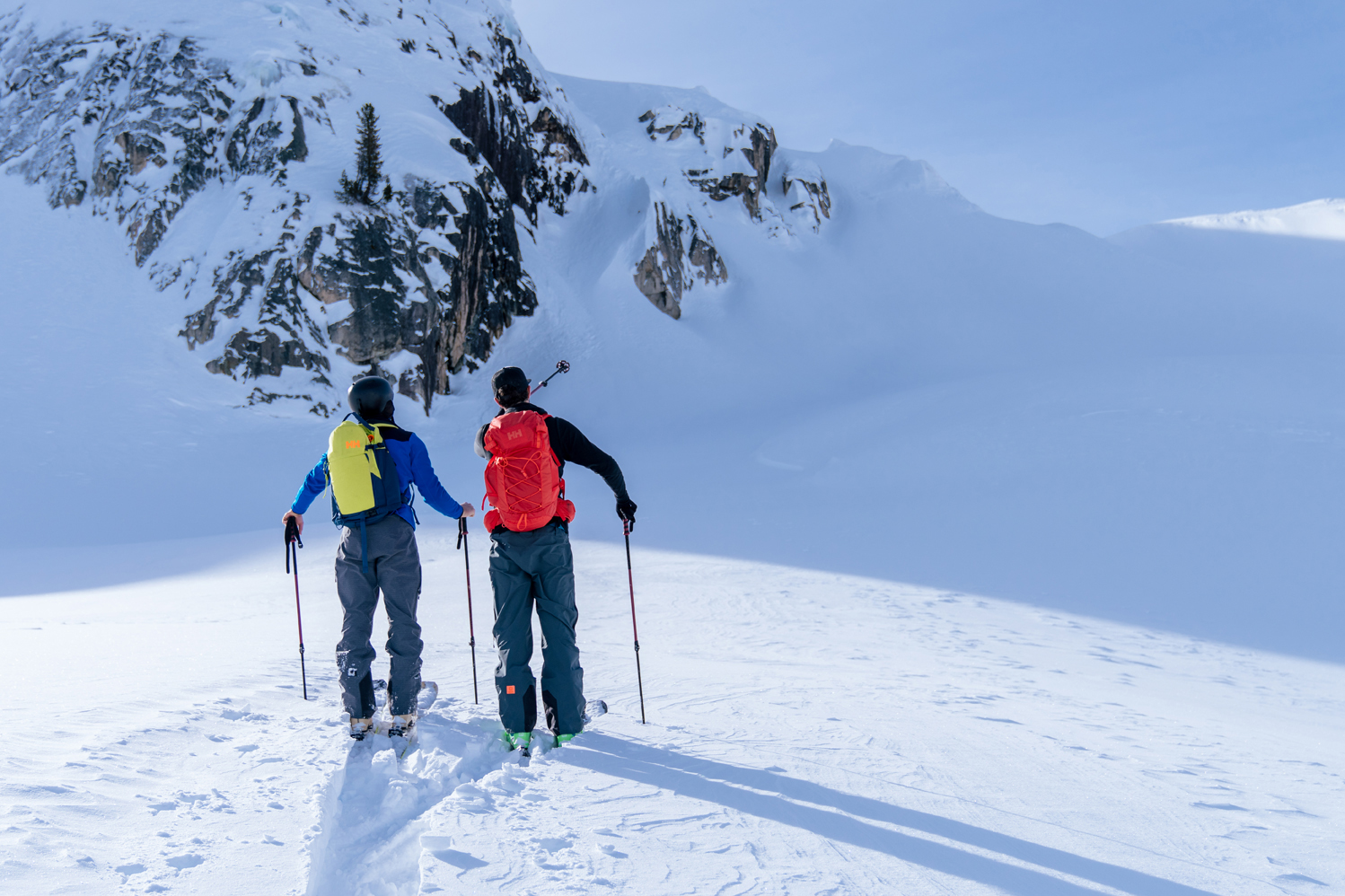How to navigate a mountain like the pros.
My friend Paul and I first spied the inviting, untracked face from the lift. It would take a bit of hiking but the reward would be first tracks on a beautiful pitch. It looked simple to find: follow an obvious spur ridge until we saw the opening in the trees. Easy.
Twenty minutes later I was hanging off a tree above a cliff while my buddy Paul was contemplating hiking back out. We survived to ride the lift back up and see where we’d gone wrong: we’d turned right one opening too soon.
I’d like to say that I learned my lesson that day and have never lost my way in technical terrain again—but I can’t. What makes my many misadventures even more frustrating is that the pros seem to do it effortlessly. In movies and the Freeride World Tour they ski runs they’ve never been down before, linking critical turns, massive airs and high speeds like it’s the bunny hill. Everything is seamless, spontaneous.
“It may look like luck,” says Gavin Phillipson, a coach with the Whistler Freeride Club. “But the pros don’t go for it haphazardly. They do their homework.”
When I was lucky enough to ski with Phillipson and Marcus Goguen, one of his top junior athletes, last winter, I paid attention. Here’s what I learned.

Think of it like a puzzle
Once you’ve chosen a line, start deconstructing it from both the bottom up and top down. Look for markers and piece them together from point to point, feature to feature, zone to zone. For instance, start at the pointy rock, drop the wind-lip and turn right under the cliff, left of the lonely stump and straight through the couloir.
Use distinct landmarks
Sun shadows will move, so stick to rocks, trees, wind features and other things that don’t. The more distinct and prominent, the better. Try to picture what they might look like from above.
Stay in the skier’s perspective
Looking up at a line, rights and lefts are from the looker’s perspective. Remind yourself that coming down it will be opposite. Keep it straight in your mind by only describing the route with your descent in mind.
Make a plan B
What happens if you miss a turn or a feature is not what you thought it was? Think about your options before you drop in, so you won’t be flying blind.
Take a photo
A quick snap from the bottom is invaluable at the top. It serves as a reminder of the line and will help orient you to the start.
Progression makes perfect
Judging speed and distance from across the valley takes practice. Start by scouting a line that includes only one critical move. Once you’ve nailed it, move on to linking two features. And build from there.
Teamwork
Get a friend to direct you from below. Phillipson often positions himself in line with the run-out. With a walkie-talkie he can talk Goguen into the line and act as a visible target to aim for.
Just do it
Before dropping in, visualize the route, linking the navigation points one after another. Review your photo. Now take a deep breath and press play. “You’ll be hootin’ and hollerin’ at the bottom,” says Phillipson.



